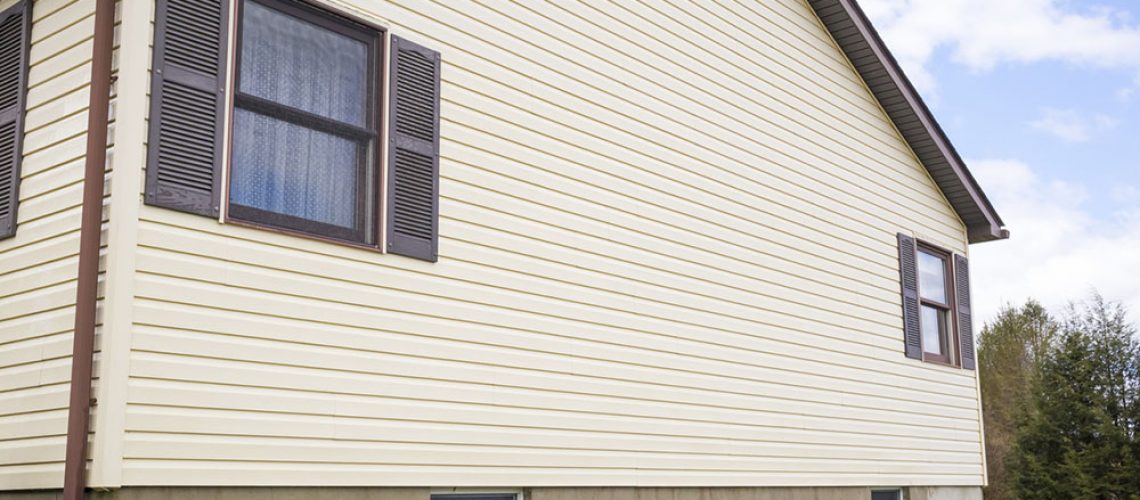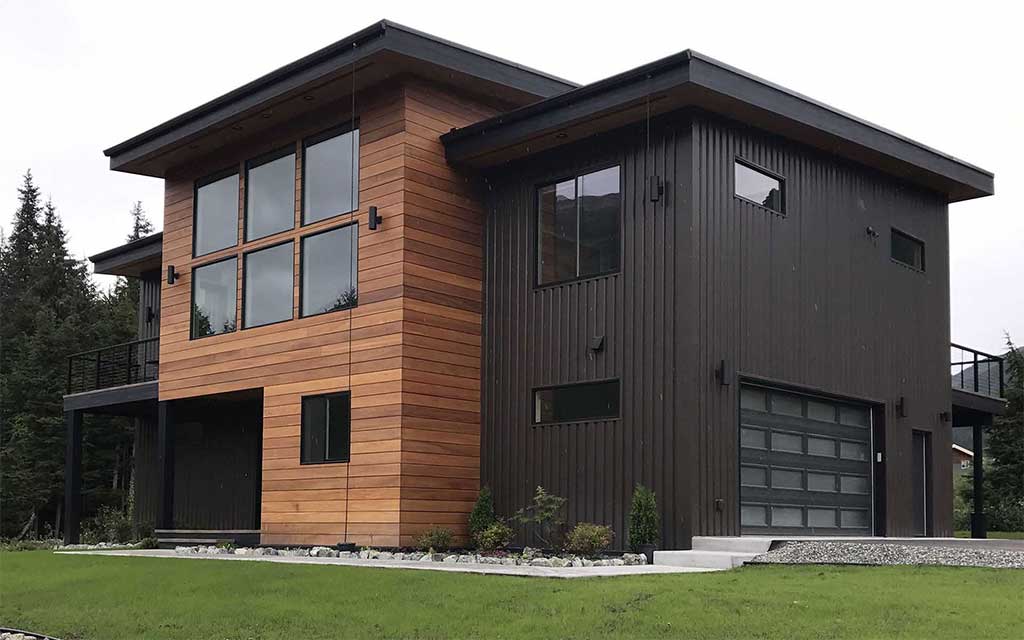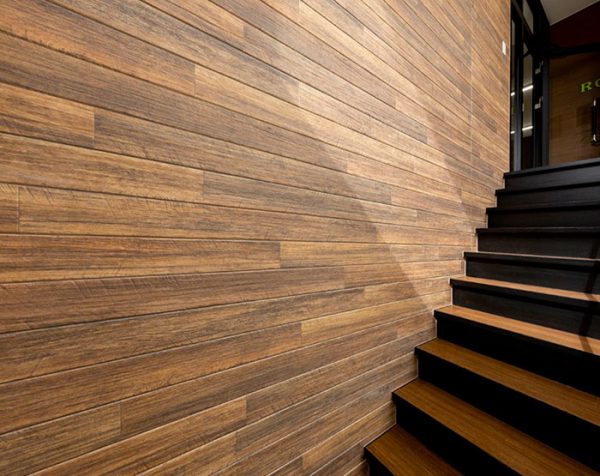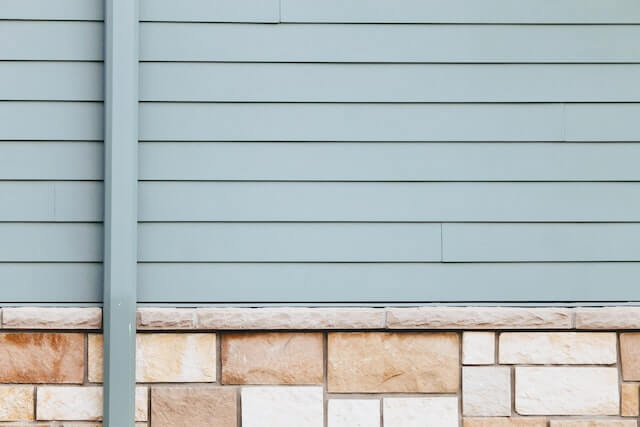What is siding?
Siding (also called wall or exterior cladding) is the protective material attached to the exterior wall of a house to protect against the elements, such as the sun, precipitation, heat and cold, insects, and animals. The siding style and material can also enhance the esthetic appeal of the home. Siding is available in a variety of materials, such as wood, brick, and vinyl.
Different types of siding
There are many types of siding available on the market. For the purposes of this article, we will look at vinyl, wood, wood fibre, brick, and aluminum siding. We also recommend that you consult a reputable siding professional for more information on the different types of siding and which would be most appropriate for your home.
Vinyl

Vinyl is an inexpensive, versatile material that requires little maintenance. It is also available in a variety of colours and styles which can enhance the appeal of your house. While vinyl is durable (it can last up to 40 years), it can fade if exposed to heat or direct sunlight.
Wood

Wood siding is more common in rural or remote areas but can also be found in urban settings.
If maintained properly, wood siding enhances the visual appeal of the house and can last anywhere from 25-55 years. While wood is durable and affordable, it does require periodic maintenance, especially in damp regions. It’s also susceptible to damage from pests, rodents and even woodpeckers! Maintenance includes replacing of any rotting planks of wood, adding a fresh coat of paint, or applying a flax oil treatment every few years.
Wood fibre

Wood fibre is a slightly more expensive and more visually appealing alternative to vinyl.
Available in a variety of colours and styles, wood fibre is weather resistant, environmentally friendly, and easy to maintain. Wood fibre is also more resistant to humidity and UV rays and can last for 25-30 years. It is important to note that this material is not easy to install. You will require the services of a reputable professional to avoid major repairs and maintenance in the future.
Brick

Made from fired clay, brick is durable, versatile, weather resistant and comes in a variety of styles and sizes.
Brick exterior cladding gives your house a touch of class and elegance that other types of siding cannot match. This material offers several advantages: it protects against mold, it’s fire resistant, it’s easy to maintain and it boasts a life span of 75 years.
On the other hand, brick cladding is more expensive than other types of siding and the bricks must be laid by a professional. In addition, the structure of the house must be able to support the bricks’ weight.
Aluminum siding

Aluminum siding is an affordable, durable, and environmentally friendly choice for your house. It is available in various colours and can even be painted. This fire and weather-resistant material has a life span of over 40 years and is easy to maintain; often a fresh coat of paint is sufficient for fading colours. Aluminum siding does have some drawbacks, however: it is not soundproof, so in windy and rainy conditions, you will hear it inside the house. Since this material is lightweight, it is also vulnerable to dents.
Cost
Prices for siding vary depending on the region and the availability of supplies. Prices are typically quoted per square foot. Here is a table of approximate prices for the different types of sidings along with their life expectancy:
|
Type of siding
|
Price per square foot
(including installation)
|
Life expectancy
|
|
Vinyl
|
$2.50 – $8.00
|
40 years
|
|
Wood
|
$6.00 – $17.00
|
25-55 years
|
|
Wood fibre
|
$4.00 – $14.00
|
25-30 years
|
|
Brick
|
$13.00 – $55.00
|
75 years
|
|
Aluminum
|
$4.50 – $12.00
|
40 years
|
Home insurance considerations
Is damage to siding covered by home insurance? That depends on the type of policy and exclusions.
If you have a named perils policy, you must add the type of peril to your coverage to receive compensation in the event of a loss. For example, if your siding was damaged by wind and you did not add wind to your policy, you would not be covered.
If you have a comprehensive (or all-risk) policy, such as the home insurance policy offered by Square One, damage to your siding will be covered unless the peril is excluded. Check your policy or contact your insurance provider or broker to see which perils are excluded. Typical exclusions include damage from wear and tear (rotting wood, peeling paint) or from animals (raccoons, woodpeckers).
Often, even if your policy does cover damage to your siding, it will only cover the cost of replacing siding that has actually been damaged. In cases where only one side of the home suffers damage (a common occurrence in hailstorms), there may be a mismatch in colour between the new siding and the faded, old siding on other sides of the house.
Some policies, such as those sold by Square One, may cover reasonable costs to maintain a uniform appearance. But this is not a given, so make sure you know how your policy would treat the situation.
Proper maintenance of your siding is also important when it comes to applying for home insurance. The condition of your siding may affect your premium or even your eligibility for insurance. If your siding shows signs of deterioration, insurers may decline your policy application. At the very least, they may ask you to have the siding replaced within a certain time frame.
One final note on insurance: if you’re having siding installed or replaced by a professional, make sure that they (or their company) is properly insured. Otherwise, you could be liable for any accidents that occur during the job.
Commonly asked questions
Do I need to hire a contractor to install siding, or can I just do it myself?
Depending on your expertise and level of comfort, it is possible to install siding yourself, although some types of cladding, such as fibre cement, wood fibre or acrylic siding, are more complex and need to be installed by a professional. As always, contact a qualified specialist before taking on this kind of job—remember, an improper installation can be costly to fix.
What is the most popular kind of siding?
That depends on the region. Vinyl is the most popular choice in Quebec because of its affordability and versatility, while in British Columbia, wood siding is widely used because this resource is readily available in the province. In the Greater Toronto Area, brick exterior cladding is common.
What about fibre cement siding or stucco?
While fibre cement is pleasing to the eye, is mold and weather-resistant, and lasts up to 40 years, the Order of Architects of Quebec has been made aware of many cases where problems appeared shortly after installation: cracks, discolouration, and surfaces that tend to chip, among others.
Stucco is designed for warm and dry climates; in the typically cold, wet and windy conditions of Canada, stucco can quickly deteriorate and even allow water to seep into your home. You should contact a qualified professional before opting for these types of siding.
Want to learn more? Visit our Getting to Know Your Home resource centre for the complete rundown on all your home's systems and features. Or, get an online quote in under 5 minutes and find out how affordable personalized home insurance can be.





